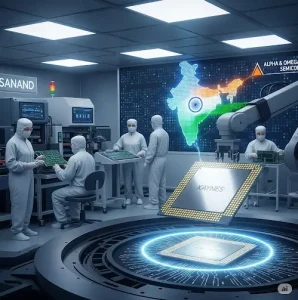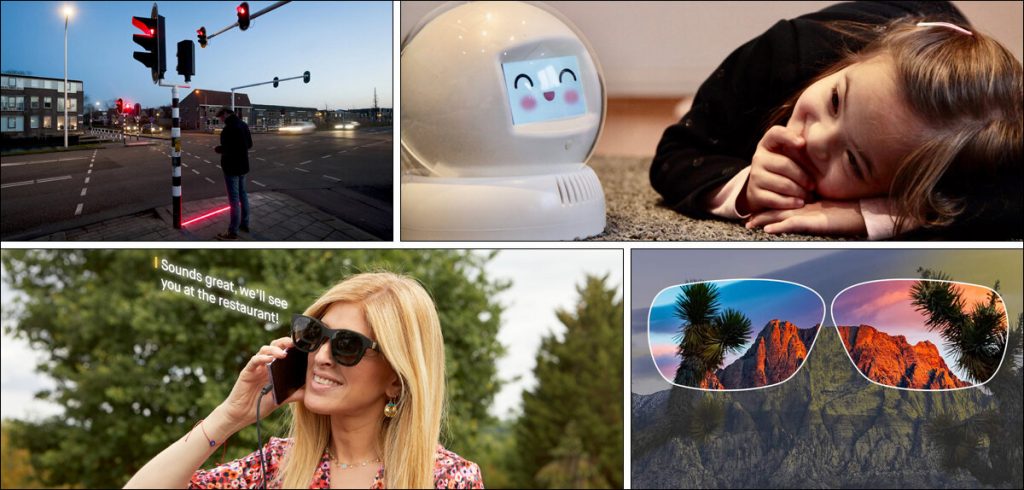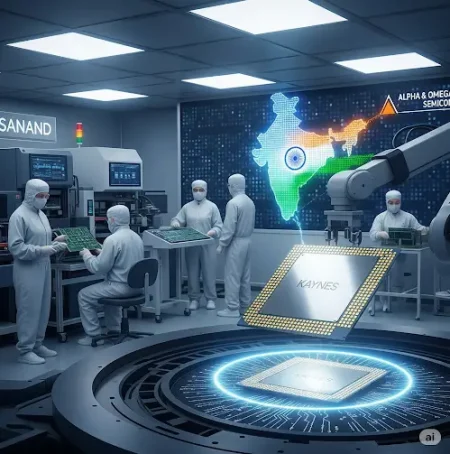Technology is constantly evolving, and while some are wonderful and weird, some have thoroughly changed people’s lives.
Technology is present in almost every sphere of our lives, from socialization and food to safety and transportation. Not only has it made information more accessible, but it’s also made learning more convenient and inclusive. Technology is constantly evolving, and while some are wonderful and weird, some have thoroughly changed people’s lives. We’ve been on the lookout for some of the most exciting and life-changing technologies from around the world. And the tech examples we’ve found only scratch the surface of just how incredible things could get.

Subtitled glasses for those who are deaf and hard of hearing
Following a conversation could be a real challenge for those who are hard of hearing, deaf, or generally hearing impaired. What if they could pop on a pair of glasses and have subtitles appearing in real-time? That’s what the Android app XRAI Glass promises. Working in tandem with AR glasses company Nreal Air, XRAI (XR for mixed reality and AI for artificial intelligence) developed a pair of glasses that must be connected to the XRAI glass app and plugged into a smartphone.
So, how do they work? When one puts these glasses on, they can see text floating in the centre of their vision. As the person opposite them continues to talk, the glasses draw up a pretty accurate transcription of what they’re saying. It might look cut off initially, but with a little tweak and adjustment, those with hearing disabilities can see speech clearly and interact with people in real-time. Not only that, but XRAI even saves a searchable transcript of every conversation!
Smart toys for children with developmental disabilities
One of technology’s most biting criticisms is that sometimes, the industry tends to push to solve trivial problems excessively. That said, there is a device that breaks the mould and promises a good techno-enabled future. We’re talking about the smart toy Leka from the French startup of the same name. Much like BB-8 from Star Wars, this small, spherical robot hasn’t been made to dazzle us with cheap tricks. Instead, it has a noble purpose: to help children with developmental disabilities like autism to learn and communicate with others better.
The Leka toy not only emits subtle vibrations but also chirps, plays music in an anthropomorphic fashion, and lights up with colourful LEDs. It even has a screen showcasing many facial expressions and can display videos and photos. That said, its primary function is indulging in educational games, where the amount of simulation and the level of interaction can be altered to customize it for kids with different needs. While some games are as simple as asking them to identify colours and objects correctly, others focus on urging them to act, receive, and, thus, interact using social cues.
This device debuted at CES (Consumer Electronics Show) in 2017 and can either be put into an autonomous state or controlled by a caregiver. The idea is to become a safe, dependable, and reliable anchor to those with disabilities via repetitive action. Since such children often face issues learning in traditional environments, taking social cues, and interacting with others, Leka acts as a robot friend with autistic children who can develop a better bond than with imposing adults.

Helping the colourblind see the world better
Although there’s no cure for colour blindness even now, it doesn’t mean that there’s no technology that can’t help specific colours look more noticeable or vibrant. That’s what the EnChroma glasses are all about. According to a recent groundbreaking study conducted by UIW, the brand’s patented lens technology improves colour vision for those with red-green colour blindness specifically, which is the most common type of colour blindness out there. Hence, they expand the range of visible colours, helping some colours look more noticeable or vibrant. The test subjects experienced immediate improvement that persisted even after they had stopped wearing the glasses. While colour blindness affects around 350 million people worldwide, those with red-green colour blindness can see as little as 10% of shades and hues. So, these glasses will go a long way in making everyday decisions and tasks easier, thus changing the lives of thousands of people.

Lighted pavements for smartphone zombies
Smartphone addiction has turned people into zombies, especially when they’re poised to cross the road. There are umpteen examples of people getting hurt because they’re looking at their phones and not looking where they’re going. German public works provider Stadtwerke Augsburg made the earliest effort towards solving this issue by fitting experimental warning lights in the ground near pedestrian crossings. They’re meant to catch the attention of smartphone users who won’t look up from their screens, potentially saving their lives. We should not need it, but it’s a brilliant idea. Soon enough, towns and cities across the Netherlands, South Korea, Israel, Australia, and Hong Kong followed suit, trying to save possible accidents with ‘smombies’ and ‘petextrians’. Talk about a guiding light.
In case you missed:
- The Life of Pi Network – FAQs and Everything Else You Want To Know
- Should Children Be Talking To AI Chatbots?
- Biohybrid Robots Are Here. Is Humanity Prepared?
- Safe Delivery App and the NeMa Smart Bot: How AI Is Aiding Safer Births Amidst Limited Resources
- AI-Red Teaming: How Emulating Attacks Help Cybersecurity
- Can Drones Protect Our Cities?
- IoT and its role in energy transition
- Here for the ‘Pi’: Pi Day 2 Updates for the Cryptocurrency
- Cloud Gaming: A New Era in Gaming
- How AI Can Fortify Cryptocurrency Security











1 Comment
This article explores how technology is revolutionizing the future of performance marketing, highlighting key trends and innovations shaping the industry’s evolution.